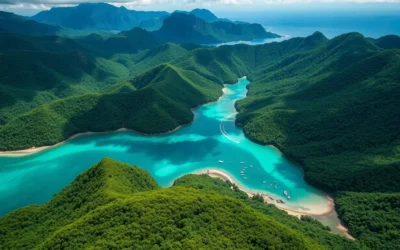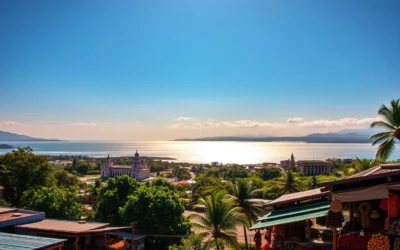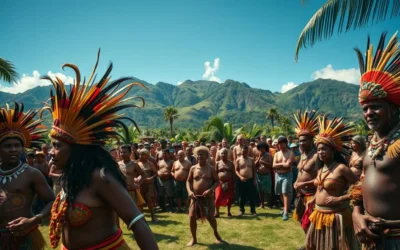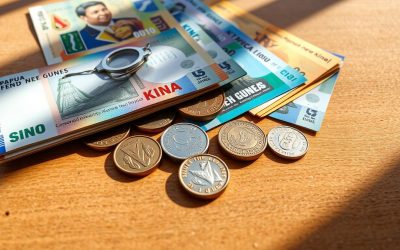✓ Accommodations✓ Flights✓ Rental Cars✓ Tours & Activities
Papua New Guinea is a remarkable country known for its incredible linguistic diversity. With over 800 indigenous languages, it stands as the most linguistically diverse nation in the world. This rich tapestry of languages reflects the country’s unique cultural heritage and history.
Among these, Tok Pisin, English, and Hiri Motu serve as the official languages. Tok Pisin, a creole language, is the most widely used, acting as a bridge between different communities. English, introduced during colonial times, plays a key role in education and governance.
This linguistic diversity shapes daily life, from family interactions to community events. It also influences education and development, making language a vital part of the country’s identity. Understanding this unique language landscape offers a glimpse into the heart of Papua New Guinea.
Introduction to Papua New Guinea’s Linguistic Diversity
The linguistic landscape of this country is unparalleled. With over 800 indigenous languages, it holds the title of the most linguistically diverse nation on Earth. This diversity is not just a statistic; it’s a reflection of the rich cultural tapestry that defines the region.
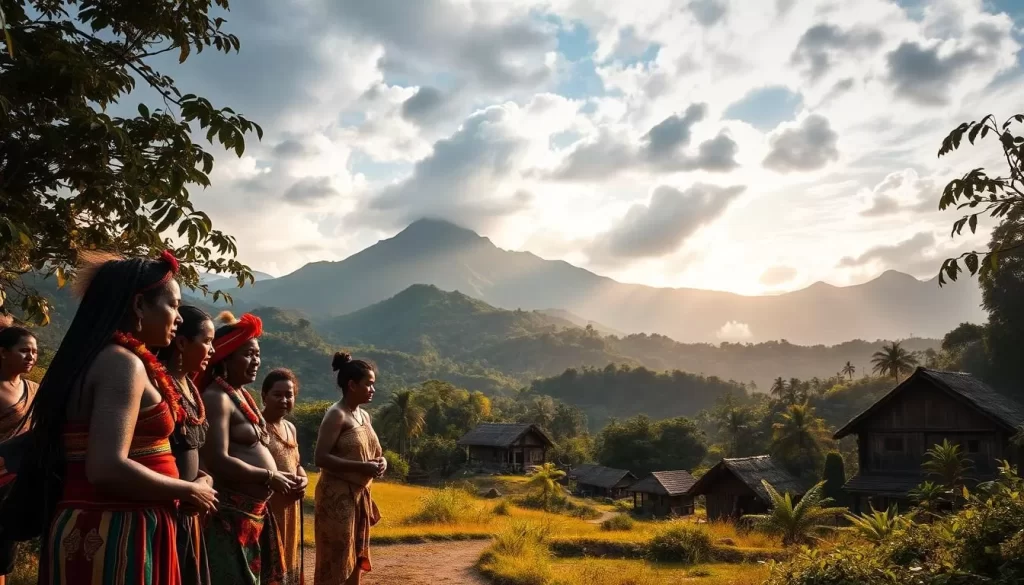
Understanding the Rich Cultural Tapestry
This country’s languages are deeply tied to its cultural identity. Historical isolation and rugged geography have allowed distinct language groups to thrive independently. Each language carries the stories, traditions, and values of its community, creating a mosaic of cultural heritage.
Language is more than a means of communication here. It’s a way to preserve history and strengthen community bonds. From family gatherings to local festivals, language plays a central role in daily life.
Exploring the Nation’s Unique Language Statistics
This country is home to approximately 852 living languages, representing about 12% of the world’s total. However, not all languages are thriving. Some are critically endangered, with fewer than 100 speakers left.
Here’s a snapshot of the language statistics:
| Category | Number |
|---|---|
| Total Living Languages | 852 |
| Endangered Languages | 124 |
| Critically Endangered Languages | 40 |
| Most Spoken Indigenous Language (Enga) | 230,000 speakers |
These numbers highlight both the richness and fragility of this linguistic heritage. Efforts to preserve endangered languages are crucial for maintaining cultural diversity.
Historical Influences on Papua New Guinea Languages
The history of languages in this region is a fascinating journey through time. From ancient roots to modern influences, the evolution of these tongues reflects the country’s rich cultural heritage.
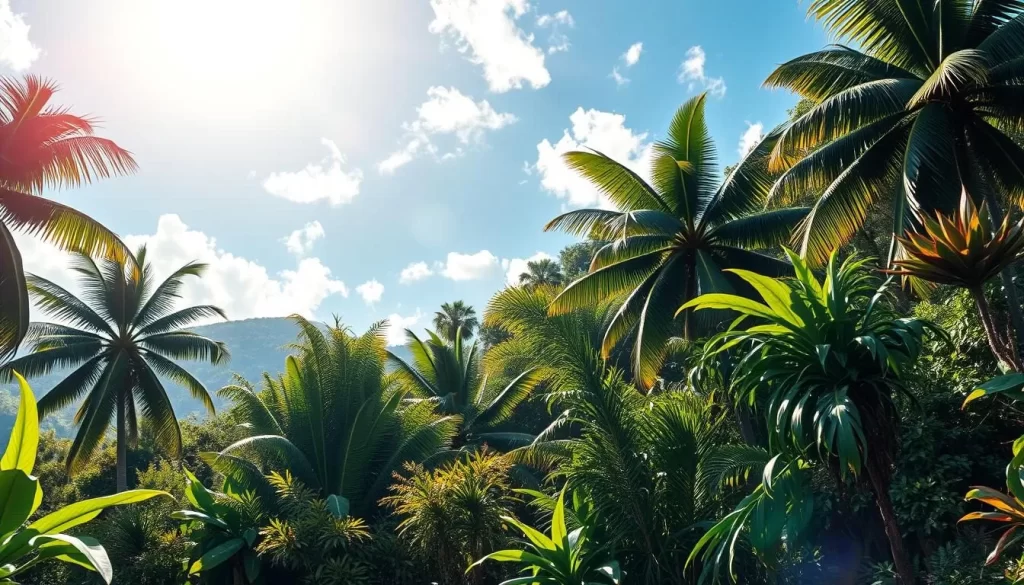
Indigenous Roots and Isolated Communities
Long before European contact, the region’s languages were shaped by its rugged geography. Isolated communities developed distinct dialects, creating a linguistic mosaic. This isolation allowed each group to preserve its unique identity.
Early societies thrived in harmony with their environment. Language was a way to pass down traditions and stories. This peaceful coexistence laid the foundation for the country’s linguistic diversity.
Impact of European Colonialism and Missionary Work
The arrival of European powers brought significant changes. Colonial forces introduced new languages and altered existing ones. This period marked a shift from isolation to interconnectedness.
Missionaries played a key role in preserving indigenous languages. They documented local dialects, creating written records that still exist today. Their efforts helped maintain cultural heritage during a time of rapid change.
Today, the legacy of both indigenous and colonial influences is evident. Languages like Tok Pisin and Hiri Motu continue to bridge communities, showcasing the resilience of this linguistic landscape.
Papua New Guinea: Official and widely spoken languages
In this vibrant nation, language plays a pivotal role in shaping governance, business, and daily interactions. With a rich linguistic heritage, the country has adopted English and Tok Pisin as key official languages. These languages bridge communities and facilitate communication across diverse groups.
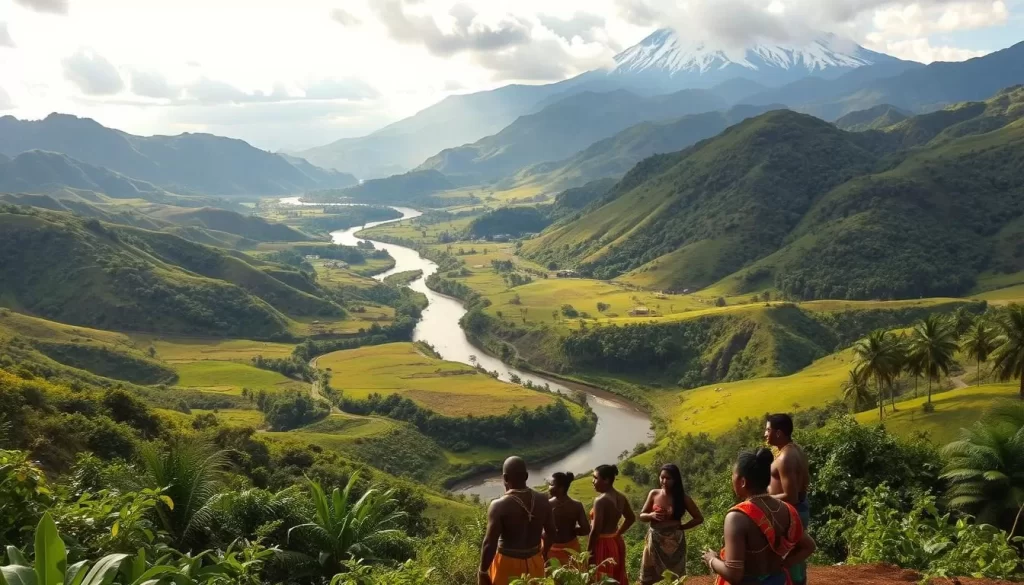
English – The Language of Governance and Business
English was introduced during Australian colonial rule and remains vital for governance and commerce. It is spoken by about 1-2% of the population, primarily in formal settings. This language is essential in education, legal systems, and international business.
Its role in shaping policies and fostering global connections cannot be overstated. English serves as a unifying force in a nation with over 800 indigenous languages.
Tok Pisin – The Nation’s Lingua Franca
Tok Pisin, a creole language, has evolved as a lingua franca. It blends English with local dialects, making it accessible to millions. Over five million people can use Tok Pisin to some extent, with one million speaking it as their first language.
This language is a cornerstone of daily life, especially in urban areas. It simplifies communication between diverse groups, fostering unity in a linguistically rich land.
Both English and Tok Pisin highlight the country’s ability to adapt and thrive. They reflect the resilience and creativity of its people, ensuring effective communication across all levels of society.
The Role of Hiri Motu and Papua New Guinean Sign Language
In this culturally rich land, communication takes many forms. Beyond the widely spoken Tok Pisin and English, two other languages play a significant role: Hiri Motu and Papua New Guinean Sign Language. These languages highlight the country’s adaptability and inclusivity.
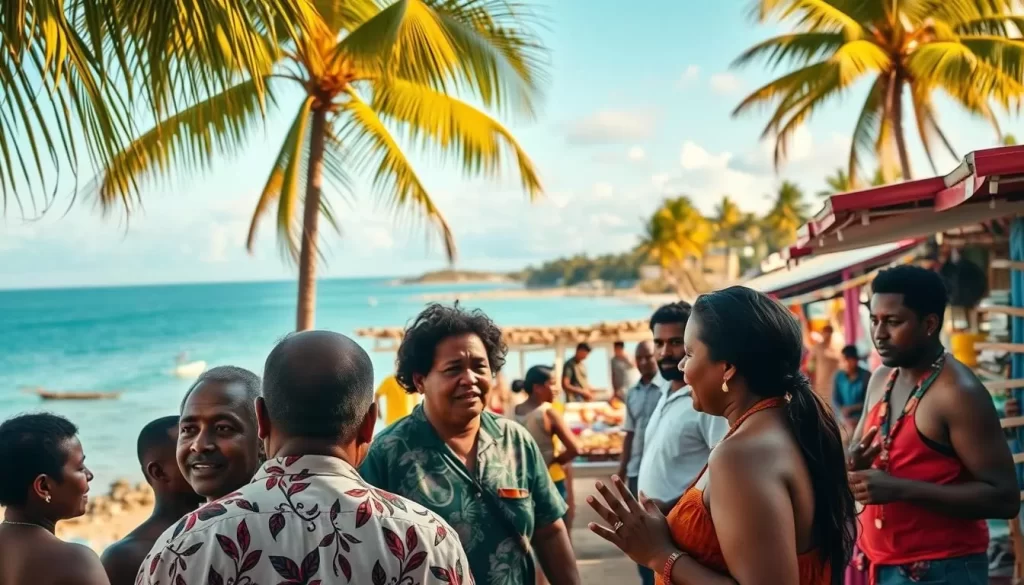
Hiri Motu in Regional Communication
Hiri Motu, one of the official languages, is primarily spoken in the Gulf Province and the National Capital District. Historically, it served as a simplified trading language, bridging communities with different dialects. Today, it remains a vital part of regional communication, especially among older generations.
Despite its declining usage among younger people, Hiri Motu continues to be a symbol of cultural heritage. Its role in fostering unity in specific regions cannot be overlooked.
The Emergence of Papua New Guinean Sign Language
Papua New Guinean Sign Language (PNGSL) was formally recognized in 2015, marking a significant step toward inclusivity. This language provides a voice for the deaf community, ensuring they are part of the broader cultural conversation.
PNGSL’s recognition reflects the country’s commitment to modern needs. It bridges communication gaps and promotes equality, showcasing the nation’s innovative approach to language use.
“Language is not just about words; it’s about connection and understanding.”
Both Hiri Motu and PNGSL demonstrate how this land embraces diversity. They connect communities, preserve traditions, and pave the way for a more inclusive future.
| Language | Primary Usage | Significance |
|---|---|---|
| Hiri Motu | Gulf Province, National Capital District | Regional communication, cultural heritage |
| PNGSL | Nationwide | Inclusivity for the deaf community |
Regional and Indigenous Languages Beyond the Official Tongues
The linguistic heritage of this region is a treasure trove of cultural identity. With over 800 indigenous languages, this land stands as a beacon of diversity. These languages are not just tools for communication but are deeply tied to the history and traditions of their communities.
Diversity of Over 800 Indigenous Languages
This country is home to more than 800 indigenous languages, representing over 10% of the world’s total. Each language carries unique stories, values, and traditions. However, many of these dialects face the risk of extinction due to declining numbers of speakers.
For example, Tobati, a language spoken by only six elderly individuals, is critically endangered. Similarly, Nafri, once spoken by 1,630 people, is now at risk. These examples highlight the fragility of linguistic heritage in this region.
Efforts to Preserve Endangered Dialects
Organizations like UNESCO are working to document and revitalize endangered languages. The Jayapura Language Centre has documented 180 languages since its establishment in 2002. These efforts aim to preserve cultural identity and ensure intergenerational transmission.
Here’s a snapshot of the challenges and initiatives:
| Challenge | Initiative |
|---|---|
| Declining speakers | Language documentation |
| Cultural erosion | UNESCO revitalization programs |
| Lack of resources | Community-led preservation efforts |
These initiatives are crucial for maintaining the rich linguistic mosaic of this land. As highlighted in this article, the fight for endangered languages is intertwined with the rights and agency of their speakers.
Language and Community: Impact on Education and Daily Life
Language shapes every aspect of life in this culturally diverse land. From schools to public services, it plays a critical role in connecting people and fostering development. This section explores how multilingualism influences education, public service delivery, and community bonds.
The Role of Language in Schools and Public Services
In this country, education systems must adapt to a multilingual population. Schools often use English as the medium of instruction, but many students speak indigenous languages at home. This creates challenges in learning and communication.
Public services face similar hurdles. Healthcare providers and government agencies must communicate effectively with diverse groups. Multilingual staff and translated materials help bridge these gaps, ensuring everyone has access to essential services.
Connecting Communities Through Multilingual Communication
Language is more than a tool for communication; it builds social bonds. In this region, community initiatives often focus on overcoming language barriers. For example, local leaders use Tok Pisin to unite people from different backgrounds.
Cultural exchange thrives in this multilingual environment. Festivals and events celebrate linguistic diversity, fostering a sense of unity. This strengthens civic participation and enhances community development.
Efforts to preserve indigenous languages also play a vital role. As highlighted in this study, maintaining linguistic heritage is crucial for cultural identity and traditional knowledge.
Global Perspectives and Translation in Papua New Guinea
Navigating the linguistic diversity of this unique land requires both preparation and cultural sensitivity. With over 800 languages spoken, effective communication is key for travelers and businesses alike. Whether you’re exploring the country or expanding your market reach, understanding the role of translation and localization is essential.
Tips for Travelers and International Business
For travelers, learning a few phrases in Tok Pisin can go a long way. It’s the most widely spoken language and acts as a bridge between communities. Here are some practical tips:
- Learn basic phrases: Simple greetings in Tok Pisin can help you connect with locals.
- Use translation apps: Apps like Google Translate can assist with basic communication.
- Hire local guides: They can help navigate both the language and cultural nuances.
For businesses, localization is crucial. Adapting your content to the local language and culture can make your brand more accessible. For example, the World Bank’s initiatives in this country highlight the importance of tailored communication strategies.
Leveraging Translation Services for Effective Communication
Professional translation services are invaluable for bridging cultural gaps. Certified agencies ensure accuracy and cultural relevance, which is vital for both personal and business interactions. Here’s how to choose the right service:
- Check certifications: Ensure the agency meets international standards.
- Understand dialect nuances: Local dialects vary widely, so expertise in specific regions is key.
- Focus on localization: Beyond translation, adapt content to resonate with local audiences.
Effective communication strategies can lead to successful cross-border interactions. For instance, the decline in indigenous language fluency underscores the need for preserving linguistic heritage while embracing modern communication tools.
By leveraging these tips and services, you can confidently engage with the diverse language speakers of this remarkable land. Whether for travel or business, understanding and respecting linguistic diversity opens doors to meaningful connections.
Conclusion
This country’s linguistic diversity is a testament to its rich cultural heritage. With over 840 indigenous languages, it stands as the most linguistically diverse nation globally. Each language carries unique traditions and stories, shaping the identity of its people.
From ancient roots to modern influences, the evolution of these languages reflects the region’s history. Official languages like English and Tok Pisin bridge communities, while indigenous dialects preserve cultural heritage. Efforts to document and revitalize endangered languages are crucial for maintaining this legacy.
Language plays a vital role in education, business, and daily life. It connects people, fosters unity, and drives development. Understanding this linguistic treasure trove offers a deeper appreciation of the country’s unique identity.
To learn more about this fascinating land, visit this resource. Explore the vibrant culture and history that make this region truly one-of-a-kind.
The above is subject to change.
Check back often to TRAVEL.COM for the latest travel tips and deals.

